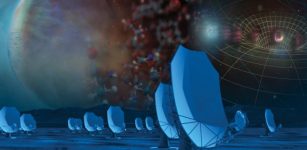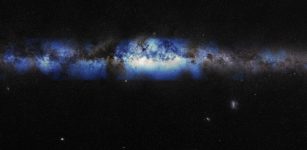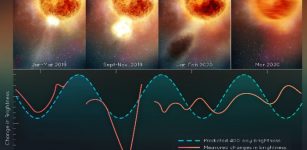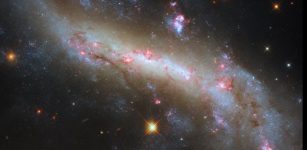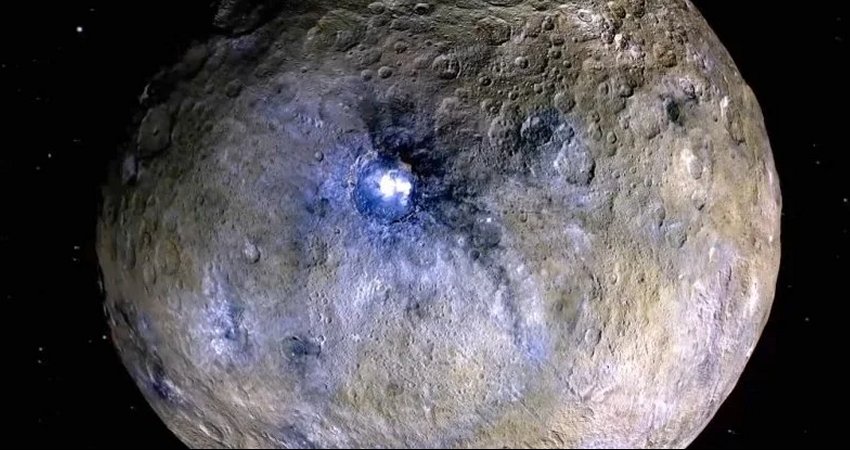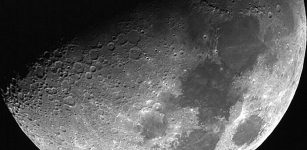Einstein’s Theory Of Gravity Holds – Even In Extreme Conditions
MessageToEagle.com – Drop a marble and a cannonball off the Leaning Tower of Pisa at the same time and they will hit the ground at the same time. That fact is explained by Albert Einstein’s theory of gravity — general relativity — which predicts that all objects fall in the same way, regardless of their mass or composition.
Even the Earth and the moon “fall” in the same way toward the sun as they orbit each other.
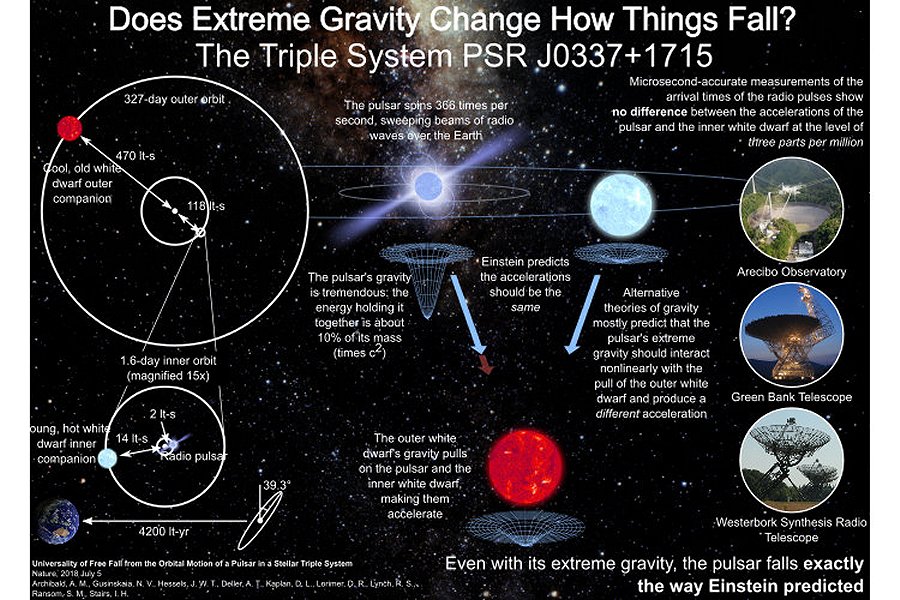
Einstein’s theory has passed all tests in laboratories and elsewhere in our solar system. But scientists know that quantum mechanics behaves differently, so Einstein’s theory has to break somewhere. Does this principle also hold for objects with extreme gravity?
The answer is “yes,” according to an international team of astronomers, including one from the University of Wisconsin-Milwaukee. They have tested the question with the help of three stars orbiting each other in a natural “laboratory” about 4,200 light years from Earth.
Triple star system
Their test subject is a triple star system called PSR J0337+1715, consisting of a neutron star in a 1.6-day orbit with a white dwarf. This pair is in a 327-day orbit with another white dwarf farther away.
About the size of a planet, a white dwarf is a star that hasexhausted its nuclear fuel and only the hot core remains. While white dwarfs are small and dense, nothing beats the density of a neutron star, which is a cinder left over after a burned-out star has exploded. Its gravity has crushed the massive remains into a remnant the size of a city.

The neutron star becomes a pulsar when it spins rapidly and has a strong magnetic field. Pulsars emit radio waves, X-rays or even optical light with each rotation.
The researchers made the measurement just by tracking the neutron star, a pulsar.
“It rotates 366 times per second, and beams of radio waves rotate along,” said Anne Archibald, the paper’s first author at ASTRON and the University of Amsterdam. “They sweep over the Earth at regular intervals, like a cosmic lighthouse. We have used these radio pulses to track the position of the neutron star.”
White dwarf gravity
When the pulsar moves, something is causing it, said David Kaplan, an associate professor of physics at the University of Wisconsin-Milwaukee and a co-author on the paper. “If Einstein is correct, it has to be the gravity of the white dwarf it’s circling that’s making the pulsar move.”
The team of astronomers followed the neutron star for six years using the Westerbork Synthesis Radio Telescope in the Netherlands, the Green Bank Telescope in West Virginia and the Arecibo Observatory in Puerto Rico.
If the neutron star fell differently from the white dwarf, the pulses would arrive at a different time than expected. But as far as the researchers know, that didn’t happen. Archibald and her colleagues found that any difference between the accelerations of the neutron star and white dwarf is too small to detect.
This system offers the researchers the opportunity to test the nature of gravity with much more sensitivity, said Kaplan, who was among the researchers who first published on the system that was discovered in 2012.
“We’ve done better with this system than previous tests by a factor of 10,” said Kaplan. “But it’s not an ironclad answer. Reconciling gravity with quantum mechanics is still unresolved.”
Can’t ignore relativity
A more precise description of gravity is important for other reasons too, said Kaplan.
“If you ignored general relativity but then tried to use the GPS on your phone, you’d end up far from your destination,” he said. “But we’re also trying to understand how the universe works here. We still don’t understand how stars move.”
Advancements in radio telescopes offer more chances at finding the perfect triple system to test, said Jason Hessels, associate professor at ASTRON and the University of Amsterdam.
If the Square Kilometre Array is built in Australia and South Africa as planned, it would be the largest radio telescope in the world, capable of finding many more millisecond pulsars as are now known in our galaxy.
“Among these yet undiscovered systems may lurk even more powerful tools for understanding the universe,” Hessels said.
“Perhaps one of these may provide our first peek at a theory beyond Einstein’s.”
Research published July 5 in Nature.
MessageToEagle.com


